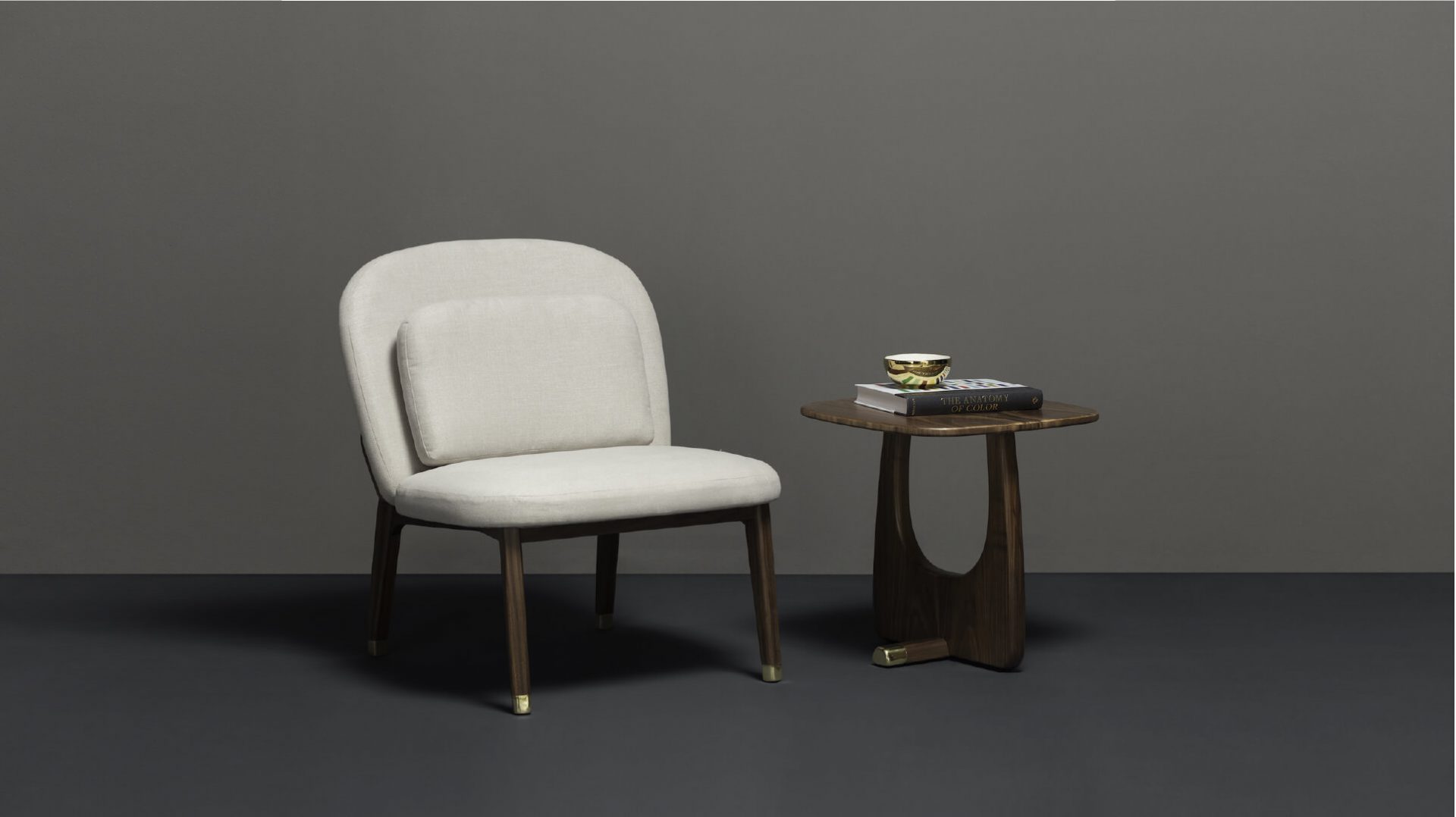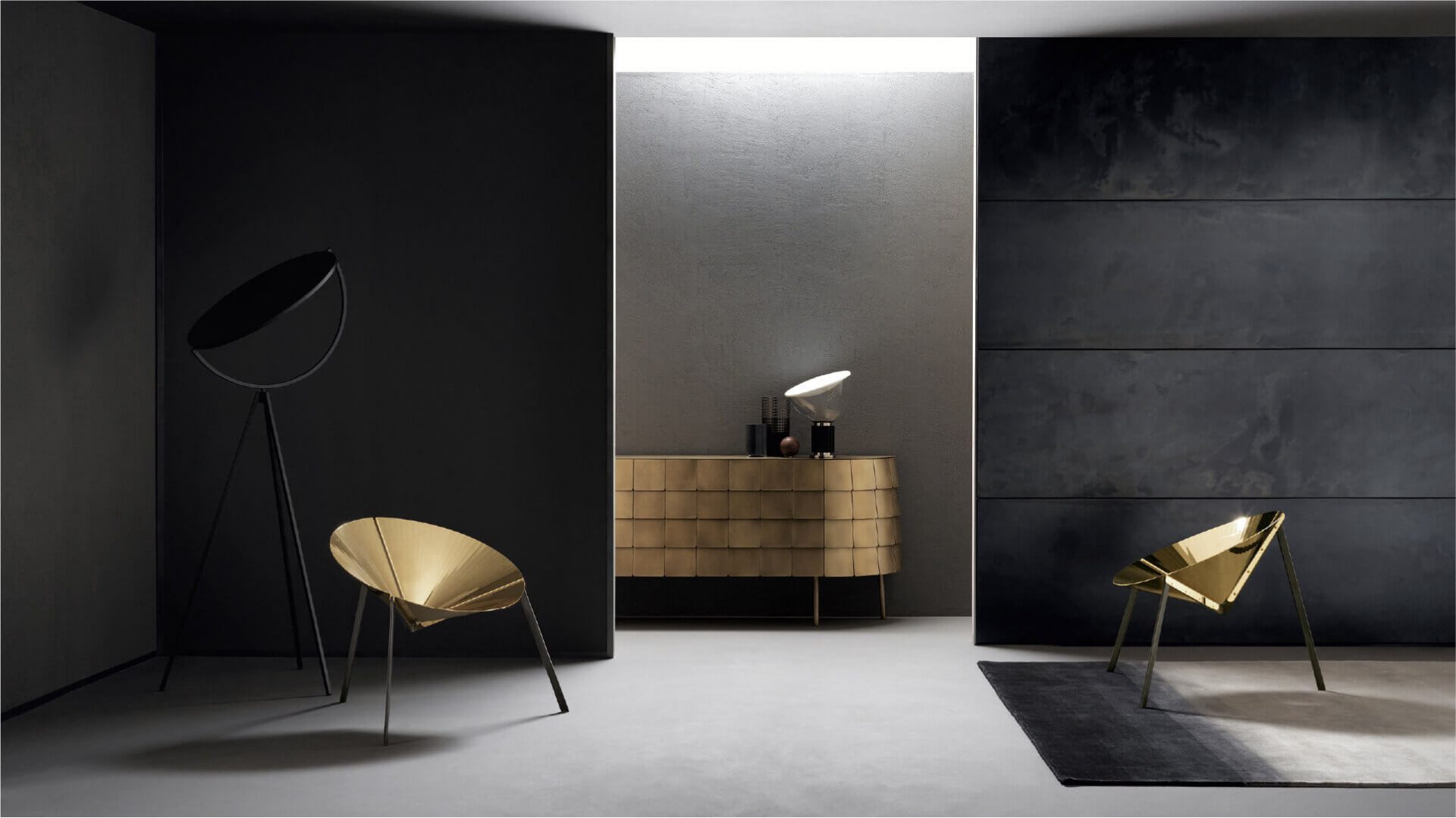The environment in which we live and our mental health are intricately connected
In this interview, Daniel Lumera, a naturalist biologist and specialist in well-being sciences, provides his advice for embracing a comprehensive approach to life within the home

During a recent event held at the IKEA venue in Milan, we had the privilege of listening to Daniel Lumera, a naturalist biologist and expert in well-being sciences. He provided valuable guidance on embracing a comprehensive approach to life within our homes, drawing parallels with IKEA’s approach to promoting well-being in home environments.
After his speech, we opted to pose some questions to him, aiming to further explore the subject and gain a deeper understanding of how companies in the world of product and interior design can respond to the growing demand for rejuvenation within our home environments.

It’s widely acknowledged that a person’s home reflects their mood and personality, but with some attention, there are elements that can enable us to draw inspiration from our living spaces, experiencing their positive impact. Within this discourse, companies take on an active role in promoting values that transcend mere products, offering suitable means to enhance the quality of home life.
Here are our questions for Daniel.
How do the objects we have in our homes affect our well-being?
Daniel Lumera:
“The environment in which we live and our mental health are intricately connected. The places where we spend a lot of time, such as our homes, can have a significant impact on our mental well-being. In psychology, these factors are referred to as environmental factors of mental health, and research shows that in some cases, they can influence to the extent of altering the structure and functionality of the brain. For instance, some studies confirm that children raised in supportive environments tend to have brain development with fewer memory issues, greater ease of learning, and fewer behavioral problems.
Furthermore, our homes reflect the inner journey of each individual. Going beyond the physical space, our dwelling holds profound meanings, ranging from the sense of security and warmth in a safe and stable environment to the insecurity that a more precarious setting can generate. Our home evokes not just a material dwelling but also feelings, people, scents, environments, inner states, emotions, colors, memories, and in the same way, so do the objects with which we furnish it, their arrangement, and the significance they hold for us.

The home is perhaps the strongest symbol of a physical, emotional, psychological, and spiritual space. When we choose objects and furnishings and make changes to our home, we profoundly impact our psyche, transforming emotions, situations, thoughts, behaviors, and relationships. After our skin, the home is the first experience of boundaries that we encounter as children, through which we establish an inside and an outside. The home is the place, primarily internal, where we begin to define ourselves.
Typically, the idea of home is associated with the living space where we can eat, rest, and take care of ourselves and our loved ones. A place to express ourselves, either alone or while learning to coexist in intimate relationships. A place to experience love and hate, adventure, freedom, protection, and recognition. Before being a physical environment, the home is, therefore, the universe in which we build the core of our individuality.
An ancestral space that safeguards the values of our intimacy; hence the importance of carefully, consciously, and authentically choosing the objects with which we furnish it. They are symbols of who we are, expressions of ourselves and our values. For example, psychological tests conducted on children using drawings of homes are important indicators of personality assessment elements and family environment, and in psychopathological tests, an attempt is made to understand the relationship with the family: closed windows correspond to closed relationships with the outside world, while large windows and homes typically delineate an extroverted character and a good communicative relationship with family members.
Therefore, the home is furnished not only with objects but, above all, with values, and this has a profound impact on every level of our well-being.”

If you had to point out essential furniture items or home accessories, what would you recommend and why?
Daniel Lumera:
“Our home engages all our senses, influencing our well-being, harmony, and aesthetic experience. Therefore, I consider several essential items for creating a truly enriching living space.
Firstly, diffusers stand out for three compelling reasons. They serve not only as decorative pieces, offering a wide range of materials, colors, and designs to match personal preferences and even contribute to room lighting, but they also have a tangible impact on the environment. They purify the air, infuse fragrances into our living spaces, and add a unique personal touch.
Fragrances, in essence, play a pivotal role in shaping our identity. Additionally, they can have therapeutic properties, harnessing the power of pure, natural, and organic essential oils to stimulate vital energies, awaken the senses, foster creativity, enhance concentration, or induce relaxation.
Equally important are items associated with rituals, contemplation, silence, and the sacredness of the home. These encompass meditation mats, cushions, as well as artworks like paintings or figurines symbolizing mental clarity, peace, profound serenity, and inspirational values.
Another indispensable element in my ideal home is the presence of plants, preferably biennial or perennial varieties with bulbs, to bring a touch of nature indoors. These indoor plants offer more than just visual appeal; they positively impact our well-being. Beyond their aesthetic charm, indoor plants help create a healthier environment by reducing stress, anxiety, and fatigue, as well as improving mood and alleviating headaches.

Therefore, integrating plants into the living space is of utmost importance, and this can be complemented by artworks that evoke the natural world. One creative concept to consider is a “mini-forest within the home,” incorporating various green solutions as part of the decor.
Lastly, I suggest incorporating music amplifiers into the home environment. These devices significantly influence our well-being by enhancing the auditory experience. They can be thoughtfully placed throughout the house to optimize the impact of music or sounds that promote health and well-being, much like the role of essential oils in setting the mood and atmosphere.”
Is there a one-size-fits-all formula for creating well-being inside the home, or does everyone need to find their own dimension? If the latter, how can individuals do that?
Daniel Lumera:
“The scientific research in this context offers fascinating insights. Firstly, it illustrates how living in a cluttered environment can strain our brains. This happens because disarrayed objects vie for our attention, leading to increased levels of cortisol (the stress hormone), negative emotions, and issues like insomnia and fatigue. Conversely, an orderly environment has a ripple effect on fostering positive behaviors and aligning our actions with our core values.
On the flip side, another scientific study demonstrates that a “disorganized” or “creatively organized” setting can stimulate us to break free from conventional thinking and embrace a more innovative mindset. In essence, science teaches us that a well-organized physical space contributes to our overall well-being, encourages healthy choices, virtuous behavior, and promotes a values-driven lifestyle encompassing qualities like kindness and generosity. However, when the aim is to think creatively and kindle innovation, having a cluttered workspace may serve a functional purpose.
So, what’s the key to success in this context? It lies in understanding how to create an environment that resonates with our unique needs and genuine desires, making us genuinely feel welcomed and at home in every aspect. The initial step involves deep introspection and self-awareness.”

During the IKEA event in Milan, a statistic struck me: it seems that 49% of couples argue due to clutter. What is the relationship between objects and furniture and family well-being?
Daniel Lumera:
“This observation is drawn from IKEA’s Life at Home Report, an annual research study that delves into people’s domestic lives. It has resonated with me, even though it shouldn’t come as a surprise. The idea is that when our inner emotional landscape is tainted by negative feelings like detachment, solitude, conflict, and anxiety, these emotions can spill over into our external surroundings.
Before we endeavor to address broader global issues, it’s crucial to first declutter and restore harmony in our most private domain: our bedroom, which symbolizes intimacy. This underscores the significance of cultivating healthy and authentic values within ourselves and in our closest relationships. It all begins with the space we inhabit—our home. Hence, it’s imperative to commence with a foundation of kindness towards ourselves, others, and the environment that envelops us. Authentic kindness, in turn, starts with the profound act of self-reflection and empathetic listening to others.
The order and serenity we maintain in our minds, the quality of our relationships, and the values we consciously embrace not only manifest in the choices and decisions we make but also in our capacity to foster well-being within our living spaces. Therefore, let’s initiate this journey from within: by nurturing mindful connections with ourselves, our partners, the family we coexist with, and our dwelling. This transformation calls for every action, choice, decision, word, and behavior to be imbued with the essence of listening, care, and a genuine exploration of ourselves, others, and our relationship with our home.”
From your point of view, what should a furniture brand do to understand how to improve well-being within homes, going beyond aesthetic considerations?
Daniel Lumera:
“Our connection with our homes is a two-way street: the choice of furniture, objects, decorations, and room organization all have a profound impact on our mental clarity, overall well-being, and lifestyle. In today’s information-saturated world, where we constantly juggle thoughts, tasks, and possessions, it’s essential to recognize the relationship between what we accumulate in our minds and within our living spaces.

One initial step that furniture brands, taking cues from IKEA, could consider is promoting awareness regarding our consumption—whether it’s ideas, information, or physical items. This involves emphasizing the connection between what we absorb mentally and what we surround ourselves with, fostering a deliberate process of selection and conscious buying. We should be discerning about what we allow into our minds, the relationships we nurture, and the items we acquire, choosing only those that promote tranquility, well-being, and an elevated quality of life. This approach should also align with sustainable and thoughtful shopping practices.
Another vital action, in my opinion, is advocating for a harmonious balance between noise and silence within our homes. Furniture brands could encourage the creation of quiet spaces that serve as sanctuaries for mental rejuvenation, enhancing the quality of rest, sleep, and fostering creativity, intuition, and mental serenity. A notable example is the meditation room, now widely embraced by businesses and multinational organizations, with a remarkable impact on our physical, emotional, mental health, relationships, and overall life quality.
These actions, although seemingly straightforward, wield substantial influence not only on our internal environment but also on the external surroundings. They set off a “ripple effect” of values, including kindness, leading to a revitalized sense of well-being. Consequently, this contributes to psychophysical health, enabling us to inhabit our surroundings with greater serenity and harmony.”












